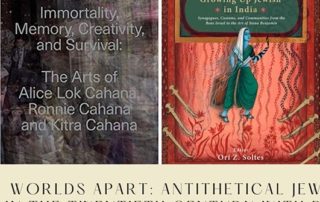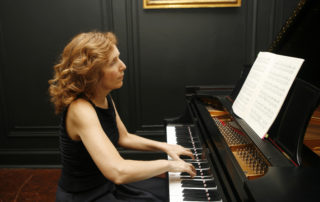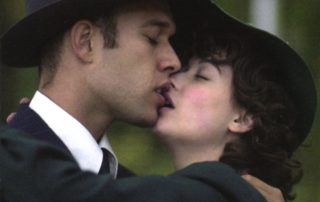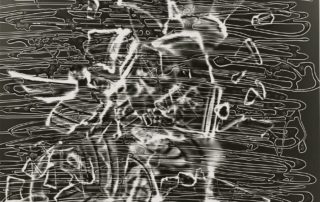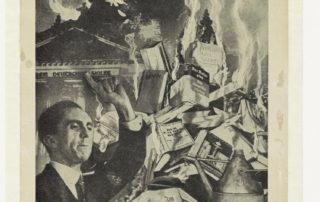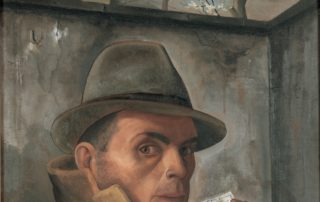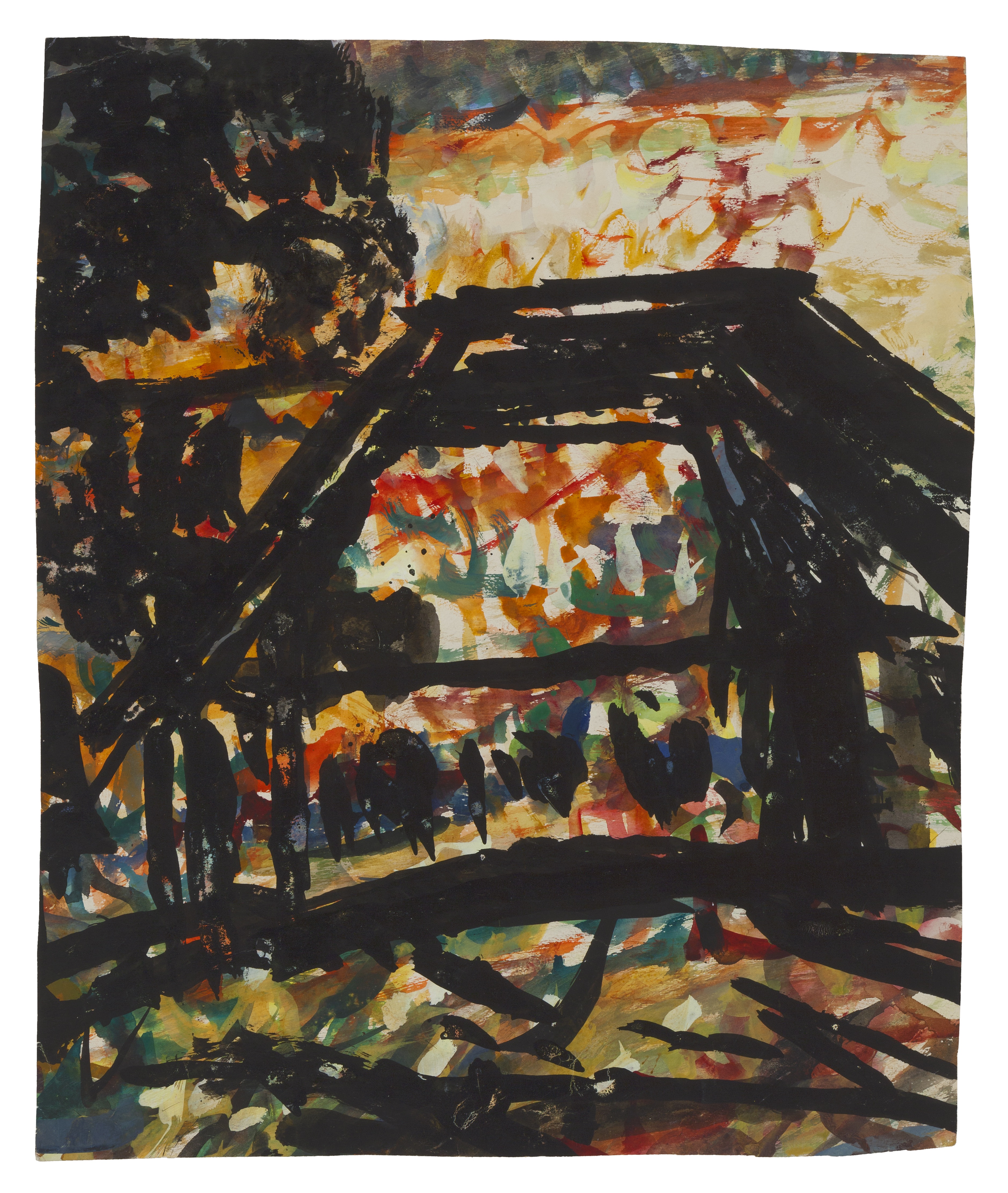Rachel Stern2022-02-18T06:23:24-05:00March 30th, 2021|Events, Past Events|
Conversation with Dr. Meital Orr and Dr. Ori Z. Soltes Opening remarks Rachel Stern, Fritz Ascher Society forPersecuted, Ostracized and Banned Art Anke Yael Popper, Embassy of the Federal Republic of Germany Organized by the Center for Jewish Civilization at Georgetown University in Washington D.C. This program delves into the following books by Ori Z Soltes: Immortality, Memory, Creativity, and Survival: The Arts of Alice Lok Cahana, Ronnie Cahana, and Kitra Cahana This book reviews the story of a 14-year-old girl from Sarvar, Hungary who was deported to Auschwitz by the Nazis, together with her family. She was the sole survivor of the deportation and transit through three different camps, ended up marrying a rabbi, moving to Houston, Texas, [...]
Rachel Stern2022-02-18T07:23:41-05:00December 31st, 2020|Events, Lectures, Past Events|
Join the Museum of Jewish Heritage — A Living Memorial to the Holocaust, the German Consulate General in New York, and the Fritz Ascher Society for Persecuted, Ostracized, and Banned Art for a stirring performance of Enger’s Mischlinge Exposé, Live from Edmond J. Safra Hall™. The performance will be followed by a discussion between Enger and Rachel Stern, Founding Director and CEO of the Fritz Ascher Society. Carolyn Enger is a pianist based in the greater New York City area, with roots reaching back to Breslau, now Wroclaw, Poland. Her Mischlinge Exposé brings to light the stories of Mischlinge—a derogatory term used by the Nazis to describe people with both Jewish and Aryan ancestry—like her [...]
Rachel Stern2022-02-18T05:51:58-05:00December 8th, 2020|Memory, Past Events|
This exclusive program features two award winners: Helene Klodawsky, Independent Filmmaker, Writer and Director of "Undying Love", Montreal (Canada) in conversation with Sabine Rollberg, Professor of Artistic Television Formats, Film and Television, Freiburg (Germany) Moderated by Rachel Stern, Director of the Fritz Ascher Society, New York (USA) Undying Love tells the poignant, enduring, and miraculous love stories of the survivors of World War II. Against the brutalized landscape of post-war Europe, this film focuses on how survivors struggled to reconstruct personal identities and forge intimate relationships. Using searing testimonies, poetic dramatizations, archives and images of romantic love from the pre- and post-Holocaust era, Undying Love is a textured retelling of several extraordinary love stories which emerged “out [...]
Rachel Stern2022-03-06T11:39:32-05:00September 30th, 2020|Events, Lectures, Past Events|
Lecture by Lynette Roth Daimler Curator of the Busch-Reisinger Museum and Head of the Division of Modern and Contemporary Art at the Harvard Art Museums Moderated by Rachel Stern Executive Director of the Fritz Ascher Society in New York Anneliese Hager (1904-1997) is one of a number of modern artists who began their artistic experimentation in Germany after National Socialist cultural policy began to harden against all forms of modern art. Her preferred medium was the photogram, a photographic image made by placing an object directly on (or in close proximity to) a light-sensitive surface and exposing it to light. Hager called the reversal of light and dark in the resulting contact print “white shadows.” [...]
Rachel Stern2020-11-04T15:01:37-05:00September 17th, 2020|Events, Lectures, Past Events|
WATCH THE RECORDING OF THIS EVENT HERE. Lecture featuring Rosa von der Schulenburg, Head of the Art Collection of the Academy of Arts in Berlin Moderated by Rachel Stern, Executive Director of the Fritz Ascher Society in New York John Heartfield (1891-1968) was a German visual artist who pioneered the use of art as a political weapon. This presentation starts with preliminary remarks about John Heartfield’s bequest in the Akademie der Künste in Berlin and shows how it is accessible nowadays. A short introduction of how all began follows, showing the background of the birth of Heartfield’s political photo-montages (World War I, Dada, Communist Party, Willi Münzenberg’s Die Arbeiter-Illustrierte-Zeitung in short AIZ), glances at Heartfield’s first exile stage in Prague and then focuses on [...]
Elizabeth Berkowitz2020-10-07T15:08:59-04:00September 16th, 2020|Lectures|
WATCH THE RECORDING OF THIS EVENT HERE. Lecture featuring Anne Sibylle Schwetter, Curator of the Felix Nussbaum Collection in the Felix Nussbaum House in the Osnabrück Museum Quarter, Osnabrück Moderated by Rachel Stern, Executive Director of the Fritz Ascher Society in New York The German-Jewish artist Felix Nussbaum (1904 Osnabrück - 1944 Auschwitz) started a promising career in Berlin around 1930, which ended abruptly when the National Socialists came to power in 1933. Years in exile in Italy and Belgium followed. In 1942 Nussbaum went into hiding in Brussels. The artist's last paintings were created here from June 1943 until shortly before his arrest in June 1944. A little later he was murdered in Auschwitz. Like hardly any other painter [...]
Rachel Stern2020-10-07T15:06:33-04:00August 31st, 2020|Events, Past Events|
WATCH THE RECORDING OF THIS EVENT HERE. Lecture featuring Anne Sibylle Schwetter, Curator of the Felix Nussbaum Collection in the Felix Nussbaum House in the Osnabrück Museum Quarter, Osnabrück Moderated by Rachel Stern, Executive Director of the Fritz Ascher Society in New York The German-Jewish artist Felix Nussbaum (1904 Osnabrück - 1944 Auschwitz) started a promising career in Berlin around 1930, which ended abruptly when the National Socialists came to power in 1933. Years in exile in Italy and Belgium followed. In 1942 Nussbaum went into hiding in Brussels. The artist's last paintings were created here from June 1943 until shortly before his arrest in June 1944. A little later he was murdered in Auschwitz. Like hardly any other painter [...]
Newsletter #4 December 2015
Rachel Stern2018-12-04T12:45:51-05:00December 17th, 2015|Newsletter|
Dear Friends, As the days are getting shorter and darker, and will at some point probably get colder as well, I remember fondly this past summer, when I had the chance to discover the vastness and diversity of the Grunewald, the largest city forest in Berlin, with Dr. Gudrun Rademacher, the long term director of the Forest Museum Grunewald. Within minutes Fritz Ascher was there, and he often walked for hours, usually in the early mornings or late at night. He documents in his art what he sees: heavy-trunked trees stand in open landscape, shaken by the wind, deep in leaf, or winterly bare. Dr. Rademacher discovered gouaches of the Forest Museum, the Hunting Castle with its signature orange roof, [...]


